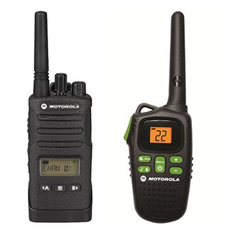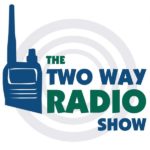The convenience of the typical cell phone is irrefutable. It allows you to send a photo, text a message, or dial a number and speak to almost anyone, almost anytime, almost anywhere in the world.
While not as widely used by the public as cellular telephones, it is not uncommon to find many people using two way radios for both personal and business applications. Consumer FRS and GMRS walkie talkies are widely used for home and recreational activities. Business radios are used extensively in many commercial, industrial, municipal and government agency operations, and in some cases are used exclusively.
But wait. If cell phones are as powerful, popular and easily accessible as they are, why not just use a phone instead of a radio? For that matter, why use a two way radio at all?
The truth is, there are many advantages to using two way radios over cell phones in many applications and situations. In fact, considering the options, it is rather astonishing how many businesses, particularly smaller companies, don't consider using radios at all and instead opt to use cell phones for one-to-one short range communications between employees.
To find out which option you should choose, let's compare the two.
Cell Phones:
- are best for long distance communications.
- are in use almost everywhere; Almost everyone has one.
- are expensive; they require a service subscription with a monthly service fee.
- cannot operate without active cell towers and service within range of the phone.
- do not require a license to operate.
- typically require a one or two year contract for service.
- may incur additional fees when monthly usage is exceeded.
- incur roaming charges when out of the home area of service.
- are generally not impact resistant, waterproof or otherwise sufficiently durable for many business uses.
- may not work well or at all in some rural or remote areas.
- include text message capabilities.
- require you to dial a number and wait for the call to connect, which can take thirty seconds or longer.
- feature group calls which involve dialing multiple numbers and establishing multiple connections.
Two Way Radios
- are best for short range communications.
- are not as commonly used as cell phones, but very easy to obtain and use.
- are typically more rugged and durable than cell phones; many are fully waterproof, submersible and even float!
- usually cost much less than cell phones.
- do not require contracts.
- do not incur monthly usage fees.
- do not have over limit usage fees.
- do not have roaming charges.
- Airwaves are free.
- may require an FCC license to operate on some frequencies or bands. Some are "licensed by rule" and do not require the purchase of a license. Read Types of Two Way Radios for details.
- only requires a one-time purchase of the radio (and a license, if required).
- require line-of-site transmission and reception.
- work well within a limited line-of-sight range in rural or remote areas.
- Some digital radios have text message capabilities.
- provide instant communcation with no wait time. Press the PTT button and transmit instantly. Simply turn the radio on to listen.
- group calls are simple. Turn on the radio to listen. Simply press the PTT button to talk to the group.
Comparing the two, it isn't difficult to determine two distinct advantages two way radios have over cell phones for many recreational activities and commercial applications. One huge difference is the cost. Even considering the cost of obtaining the most expensive license to operate a GMRS or business radio, cell phones can cost more to own and operate, a lot more.
For instance, consider the family that takes frequent hiking trips out of their home cell service area. Roaming charges can add up fast, even on a family plan, and there is no guarantee of service in the area of their hiking excursion. Taking a couple of $200 to $400 cell phones out on the trail and into the elements is also a risky proposition, unless of course, money is no object.
However, a GMRS license currently costs $70 and covers the entire family. A pair of high end Midland GXT1000 radios cost considerably less than one $200 cell phone. These radios are also a lot more durable and can take more punishment from the outdoors. Their chances of survival are considerably higher than the phone. If the hikers are using FRS frequencies, the cost is even lower, because no license is required to operate on the Family Radio Service. In this scenario, using two way radios for short range communications between members of a group just makes more sense.
This is particularly true in a commercial environment. In fact, based on the comparison above, businesses and organizations that require employees to use cell phones for localized, short range two way communications within relatively close proximity to one another instead of business radios can actually reduce or impede the efficiency of their operations very quickly, ultimately wasting time, resources, and, of course, money.
One of the greatest advantages of using two way radios over cell phones in any environment is the ability for simple, instant communication. Instant means just that. You simply pick up the device, press one button and talk, or even simpler, just listen. It doesn't get much simpler than that.
There is an old axiom about using the right tool for the right job. In the case of cell phones and two way radios, this is especially true. Each has their place, to be sure.
However, while a cell phone is useful for one-to-one, full duplex conversations across great distances, It isn't usually the best choice for instant, "always on" group, team or one-to-one communications over short distances or within a limited, confined area. In such situations, the two way radio is usually a more efficient, economical and overall practical choice.





















